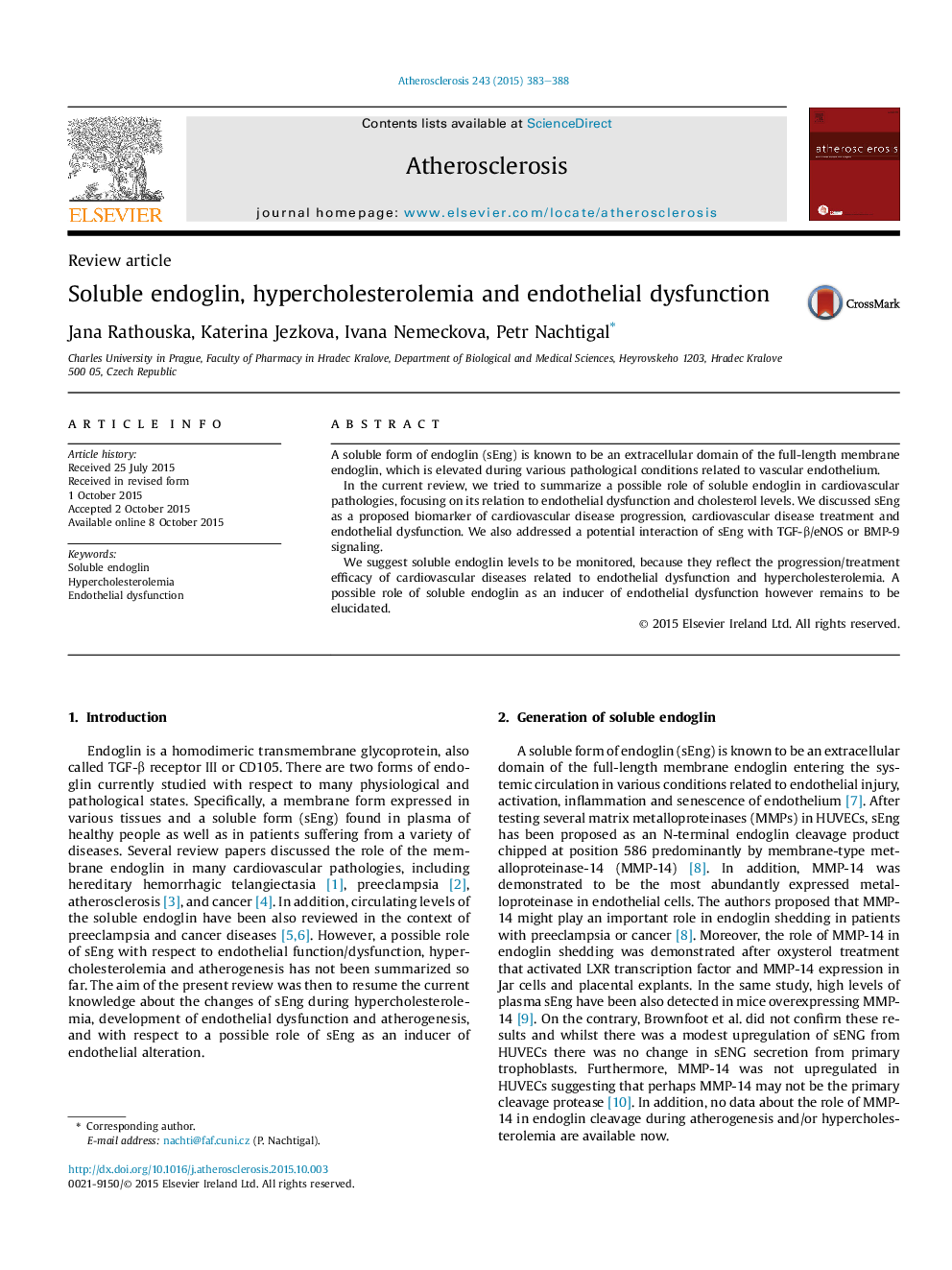| کد مقاله | کد نشریه | سال انتشار | مقاله انگلیسی | نسخه تمام متن |
|---|---|---|---|---|
| 2892642 | 1172337 | 2015 | 6 صفحه PDF | دانلود رایگان |
• sEng levels (increase) might be considered as a biomarker related to endothelial dysfunction and hypercholesterolemia.
• sEng levels might be monitored during the treatment of diseases related to endothelial dysfunction and hypercholesterolemia.
• sEng levels might be related to membrane endoglin expression that was not demonstrated during atherogenesis in aorta so far.
• sEng is able to induce signs of endothelial dysfunction, however with no direct evidence in atherosclerosis-prone arteries.
• sEng is able to interact with TGF-β/eNOS and/or BMP-9 signaling, which might result in endothelial function impairment.
A soluble form of endoglin (sEng) is known to be an extracellular domain of the full-length membrane endoglin, which is elevated during various pathological conditions related to vascular endothelium.In the current review, we tried to summarize a possible role of soluble endoglin in cardiovascular pathologies, focusing on its relation to endothelial dysfunction and cholesterol levels. We discussed sEng as a proposed biomarker of cardiovascular disease progression, cardiovascular disease treatment and endothelial dysfunction. We also addressed a potential interaction of sEng with TGF-β/eNOS or BMP-9 signaling.We suggest soluble endoglin levels to be monitored, because they reflect the progression/treatment efficacy of cardiovascular diseases related to endothelial dysfunction and hypercholesterolemia. A possible role of soluble endoglin as an inducer of endothelial dysfunction however remains to be elucidated.
Journal: Atherosclerosis - Volume 243, Issue 2, December 2015, Pages 383–388
